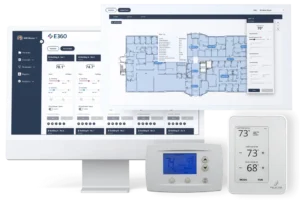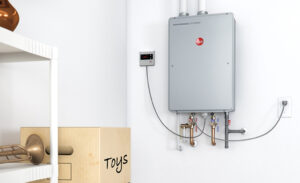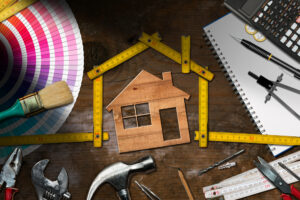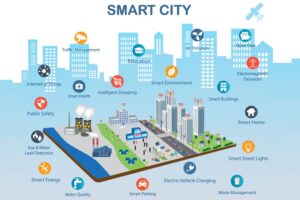Gardening is a practice that has long captured the imaginations of those who cherish the outdoors, providing a means of creating beautiful, vibrant spaces. As with any art form, gardeners face choices that influence both the process and the final product. Among the most fundamental decisions is whether to focus on the tools of the trade—those implements that assist in the cultivation, maintenance, and design of gardens—or to place emphasis on the plants themselves, trusting nature to do much of the work. While these two elements might seem inseparable, understanding their individual contributions and how they can work together is key to designing a thriving garden or outdoor space. This article explores the merits of tools versus plants in gardening, offering insights into what works best depending on your gardening goals, preferences, and limitations.
The Role of Tools: Efficiency, Precision, and Control
For many gardeners, tools are the backbone of their outdoor pursuits. From simple hand tools like spades and pruners to larger machinery such as lawnmowers and tillers, these implements promise to make gardening tasks faster, more efficient, and far less labor-intensive. While plants are the stars of the garden, it is the tools that often dictate how easily and effectively those plants can be cultivated, shaped, and maintained.
Advantages of Using Tools
-
Efficiency and Speed: The primary advantage of using tools in gardening is the sheer efficiency they offer. Tasks like digging, weeding, pruning, and aerating soil become less time-consuming with the right equipment. A well-maintained lawnmower allows for swift lawn care, while a rototiller can break up soil much faster than working it by hand. For larger spaces or gardens that require ongoing care, tools are indispensable in ensuring that the work doesn’t become overwhelming or excessively time-consuming.
-
Precision and Consistency: Tools allow for a level of precision that can be hard to achieve through other means. For example, using a garden rake ensures that the soil is evenly spread or that leaves are consistently cleared. Pruners can help achieve exact cuts on plants, promoting healthier growth and aesthetically pleasing shapes. The control tools provide also extends to tasks like planting, where specialized tools allow gardeners to create uniform rows and ensure seeds are sown at the correct depth and spacing.
-
Labor Reduction: Gardening, while immensely rewarding, can also be physically demanding. The repetitive nature of tasks such as weeding, soil preparation, and harvesting can strain the body over time. Tools—whether simple hand implements or powered machinery—help to minimize the physical toll. Garden carts, ergonomic hand tools, and power trimmers reduce the amount of bending, lifting, and exertion required, making gardening more accessible to people of all physical abilities and ages.
-
Specialization and Versatility: Certain tasks in gardening benefit from specialized tools. A hori-hori knife, for example, is invaluable for digging and cutting in tight spaces, while a leaf blower makes quick work of cleaning up debris. Powered tools, such as electric hedge trimmers, can shape and maintain hedges with far less effort compared to manual shears. Tools provide the versatility to tackle a wide array of tasks with the right equipment for each job, improving the overall design and function of your garden.
Challenges of Relying on Tools
-
Cost and Maintenance: One of the most significant drawbacks of using tools, especially for larger gardening projects, is the cost. While basic hand tools are often affordable, more specialized or powered equipment can be quite expensive. Furthermore, tools require regular maintenance. Lawnmowers need oil changes, blades must be sharpened, and electric trimmers require charging or battery replacement. For some gardeners, the ongoing cost and upkeep of tools can become burdensome.
-
Environmental Impact: Powered tools, particularly those that rely on fossil fuels, contribute to environmental degradation. Gas-powered lawnmowers, chainsaws, and leaf blowers emit carbon dioxide and other pollutants. Additionally, the noise pollution generated by these tools can disrupt the tranquility of both the gardener and the surrounding environment. For those who prioritize sustainability, minimizing tool usage or opting for manual alternatives may be a more eco-friendly choice.
-
Over-Mechanization: Gardening, at its core, is about connecting with nature. Relying too heavily on tools, especially mechanized ones, can create a disconnect between the gardener and the organic world they are cultivating. Some gardeners argue that excessive tool usage reduces the mindfulness and satisfaction that comes from hands-on, tactile gardening. In this view, tools, while helpful, may detract from the intimacy of the gardening experience.
The Significance of Plants: The Heart of the Garden
Plants are undeniably the stars of any garden. Whether it’s a carefully curated flower bed, a bountiful vegetable garden, or a tranquil green space, plants provide the color, texture, scent, and life that give a garden its purpose. Beyond their aesthetic value, plants also play critical roles in ecological health, providing oxygen, attracting pollinators, and supporting biodiversity. In many ways, the plants themselves shape the way we approach gardening.
Advantages of Focusing on Plants
-
Natural Beauty and Aesthetic Appeal: Plants are the essence of any garden’s visual impact. A thoughtfully chosen combination of flowers, shrubs, trees, and groundcovers can turn an ordinary outdoor space into a vibrant, dynamic environment. Plants not only contribute color and texture but also create moods and atmospheres. From the cool serenity of a fern-filled shade garden to the bold statement of a flower bed in full bloom, plants are what give a garden its character.
-
Biodiversity and Environmental Benefits: Plants have a profound role in supporting local ecosystems. They attract pollinators such as bees, butterflies, and hummingbirds, contributing to the health of both the garden and the larger environment. Trees, shrubs, and grasses help to combat erosion, improve soil structure, and enhance water retention. By focusing on plants, gardeners can foster biodiversity and contribute to the overall health of their natural surroundings.
-
Sustainability and Low Input: Once established, plants can be a sustainable and low-maintenance option. Native plants, in particular, require less water and fertilizer, making them a practical choice for gardeners concerned with sustainability. Additionally, well-chosen plants that thrive in local climates can reduce the need for pesticides and herbicides, further enhancing the eco-friendliness of the garden.
-
Personal Satisfaction and Emotional Connection: There is an undeniable sense of satisfaction in watching plants grow and flourish. The process of planting, nurturing, and witnessing the transformation of seeds into mature plants fosters a deep emotional connection between gardener and garden. Many gardeners describe this relationship as therapeutic, finding peace in the act of tending to their plants and watching them thrive.
Challenges of Focusing Solely on Plants
-
Time and Patience: While the reward of a plant-based garden is significant, the journey is often long and requires considerable patience. Seeds take time to germinate and grow, and even mature plants need time to settle into their environment. Unlike the instant results that tools can provide, plants require ongoing attention to thrive. This can be frustrating for gardeners who are looking for quicker gratification or those who lack the time to properly care for their plants.
-
Vulnerability to Pests and Disease: Plants are susceptible to pests, diseases, and environmental stressors. Without the right care and preventative measures, a garden can quickly become overrun by weeds or infested with insects. While natural methods such as companion planting or attracting beneficial insects can help manage these threats, some level of vigilance is always required. Invasive plant species can also become problematic, overwhelming the natural landscape and disrupting plant diversity.
-
Limited Control: One of the inherent challenges with focusing on plants is that nature can be unpredictable. Weather, soil quality, and external factors often determine how well plants grow, and even the most carefully planned garden can fall victim to poor conditions. For gardeners who prefer a greater degree of control over their environment, the unpredictability of plant growth can be frustrating.
Blending Tools and Plants: The Optimal Approach
While tools and plants serve distinct roles in gardening, the most effective approach is often a blend of both. Tools provide the means to optimize garden maintenance and increase efficiency, while plants offer the long-term beauty and ecological benefits that are the heart of any garden. For example, tools can be used to prepare the soil, plant seeds, and maintain healthy growth, while plants transform the space into a lush, living entity. By combining the power of tools with the timeless beauty of plants, gardeners can create a more efficient, sustainable, and aesthetically pleasing outdoor environment.
Conclusion: Tools, Plants, or Both?
Ultimately, the question of whether tools or plants work best in gardening depends on your goals and priorities. Tools are indispensable for achieving efficiency, precision, and control, while plants provide the heart, soul, and ecological benefits of a garden. For most gardeners, a harmonious balance of both tools and plants offers the best of both worlds: the utility of tools paired with the enduring beauty and sustainability of plants. The result is a garden that is not only efficient and easy to maintain but also vibrant, diverse, and full of life.
















